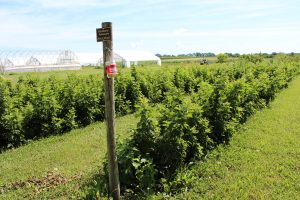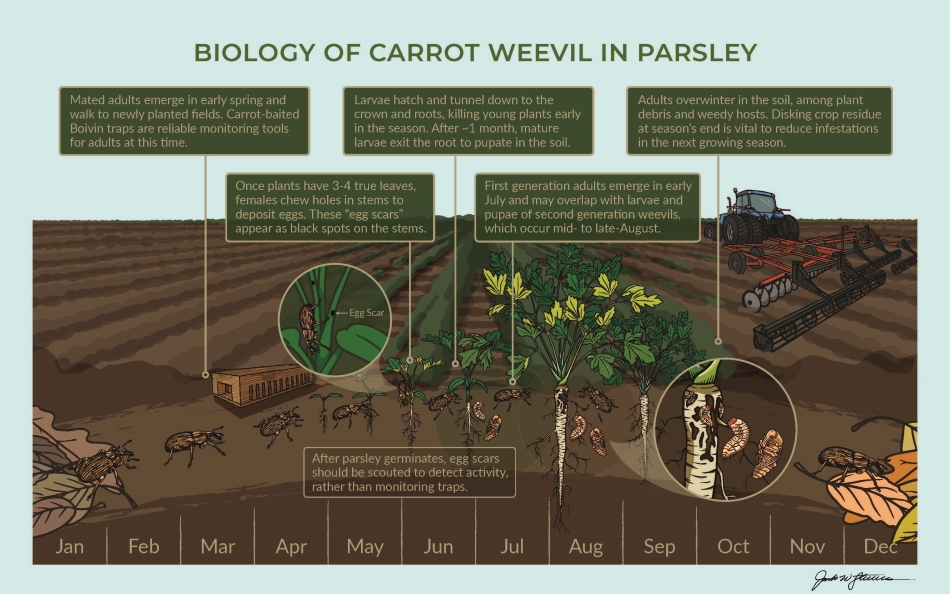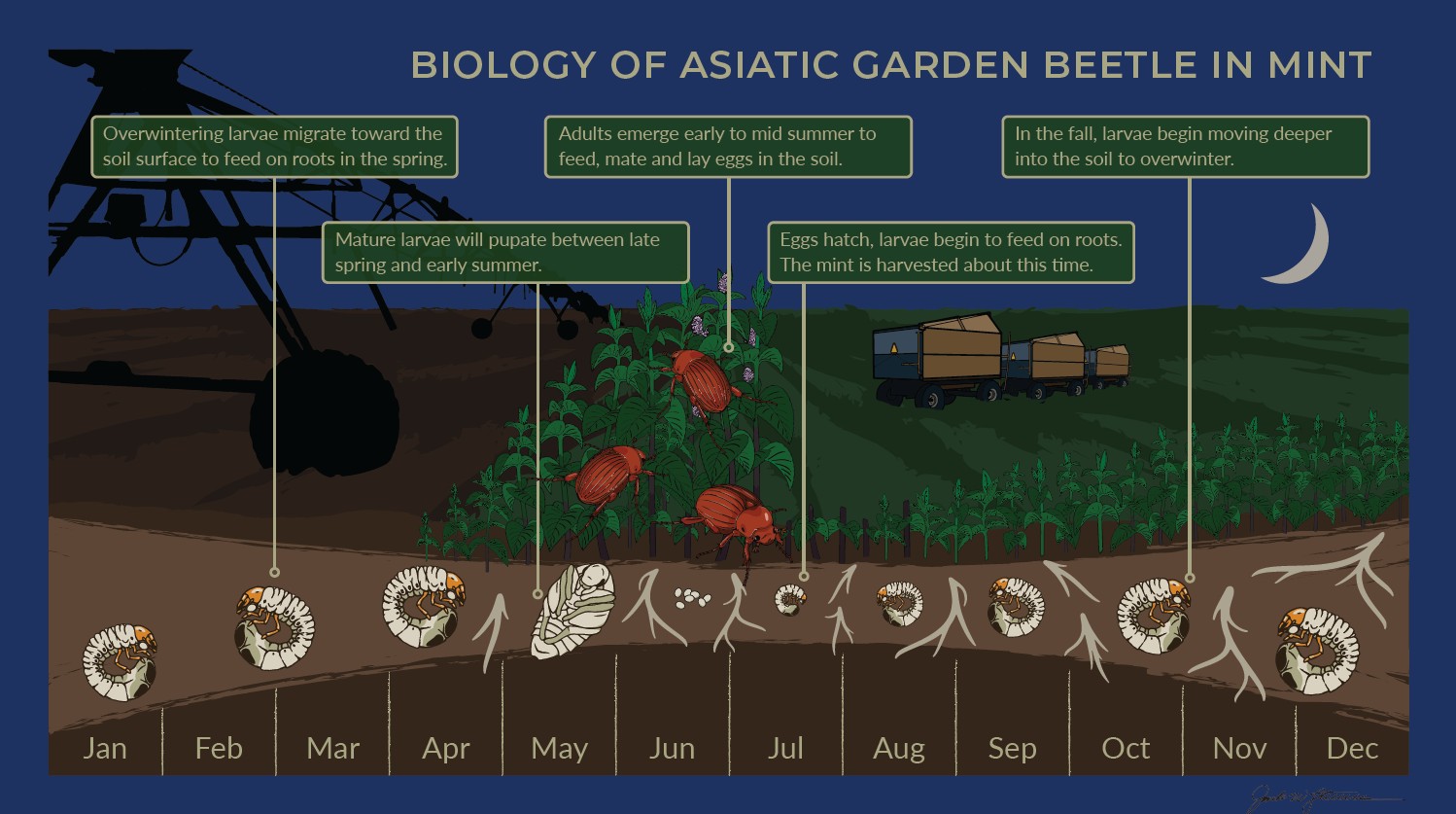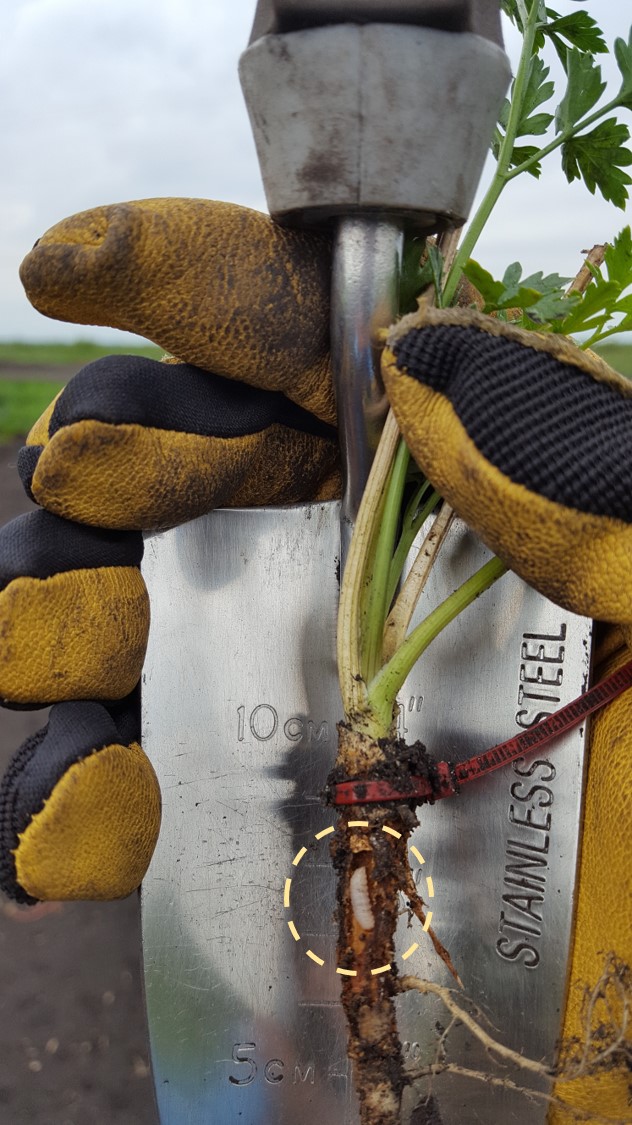Current Research Projects
Monitoring tree and small fruit insect pests in collaboration with Indiana farmers
 We are working to establish a monitoring network at Purdue Agricultural Centers (PACs) throughout the state to survey the seasonal activity of tree fruit pests, including codling moth and Oriental fruit moth, and invasive small fruit pests, like spotted wing drosophila (SWD) and the brown marmorated stink bug (BMSB). Our goal is to provide Indiana fruit producers with near real-time updates of first detection and changes in population numbers so they can plan management efforts accordingly.
We are working to establish a monitoring network at Purdue Agricultural Centers (PACs) throughout the state to survey the seasonal activity of tree fruit pests, including codling moth and Oriental fruit moth, and invasive small fruit pests, like spotted wing drosophila (SWD) and the brown marmorated stink bug (BMSB). Our goal is to provide Indiana fruit producers with near real-time updates of first detection and changes in population numbers so they can plan management efforts accordingly.
Evaluating strategies to improve management of carrot weevil in commercial celery and parsley fields
We continue to support specialty crop producers in Ohio in their efforts to monitor and manage the carrot weevil, a key pest of carrots, parsley, and celery in muck soil regions surrounding the Great Lakes.
Monitoring adult carrot weevil activity can be challenging because these insects are small and cryptic. If it is early in the season (before crops have germinated) the best strategy to detect adults is to deploy wooden Boivin traps baited with a single carrot on the edges of fields that were infested the previous year. Here’s a link to a helpful factsheet created in the lab: Monitoring carrot weevils using wooden Boivin traps.
If it’s later in the season and crops have germinated in the field, wooden Boivin traps are not as effective for detecting adults. Instead, begin scouting fields for egg scars on the petioles of young plants. Although this is a tedious task, it is more reliable method for monitoring the activity of the elusive adults later in the growing season.
 Photo credit: Jack Stevens
Photo credit: Jack Stevens Developing action thresholds for management of Asiatic garden beetle in commercial mint production

Indiana is one of the leading states in the nation for peppermint and spearmint oil production! Mint is a perennial crop that is often rotated with corn and soybean in Indiana and a pest of these row crops, the Asiatic garden beetle (AGB), can be problematic in young and established mint fields if they are not managed effectively prior to mint planting. We are collaborating with Dr. Richmond’s Soil Insect Ecology lab to determine the risk factors associated with AGB infestation and help growers develop an action threshold for management based on sampling field soils for AGB larvae (white grubs).
Evaluating carrot weevil ecology to promote sustainable IPM in specialty cropping systems

The carrot weevil is a devastating pest of high value specialty crops in the family Apiaceae, namely carrots, parsley, and celery. Managing this weevil is a key challenge for growers in the Great Lakes region of the US and Canada: the adults weevils are challenging to monitor because they are well camouflaged and do not consistently come to traps, and the damaging larvae are hidden inside plant petioles where they are protected from natural enemies and insecticides. We are working to better understand the role of factors like plant breeding, carrot weevil population genetics, and carrot weevil behavior, on the likelihood of crop damage and management success.